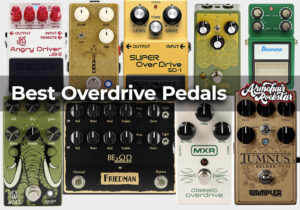In the vast landscape of rock music, the keyboard stands as a monument to versatility and emotion. From the ethereal sounds of Ray Manzarek of The Doors to the powerful chords of Jon Lord from Deep Purple, the keyboard has been a defining instrument in rock’s rich tapestry.
We curated this list from speaking to a handful of rock keyboard players about the things they most wish they knew from day one. What would have made their progression as a player easier if they knew it many years ago. So, here’s our list of 10 rock keyboarding tips that can help you reach that next level.
Top 10 Rock Keyboarding Tips
- Tip #1: Mastering the Sustain Pedal
- Tip #2: Experiment with Synth Sounds
- Tip #3: Dynamic Playing
- Tip #4: Incorporate Rhythmic Patterns
- Tip #5: Layering Sounds
- Tip #6: Practice with a Metronome
- Tip #7: Learn Classic Rock Riffs
- Tip #8: Explore Different Keyboards and Gear
- Tip #9: Collaborate with Other Musicians
- Tip #10: Keep Learning and Stay Inspired
READ MORE: Best Guitar Overdrive Pedals 2023
The Basics: Setting the Foundation
Before you can soar, you must first learn to walk. Mastering the basics of keyboarding is essential. This includes understanding the importance of posture and hand positioning, ensuring you’re set up for success from the start. But for rock keyboards, there are some specific skills that can take your skill to that next level.
Tip #1: Mastering the Sustain Pedal
The sustain pedal isn’t just a footrest; it’s a tool to create a richer, fuller sound. By holding notes longer and blending chords, it adds depth to your playing. Learn when to use it, and perhaps more importantly, when not to.
Tip #2: Experiment with Synth Sounds
Synthesizers revolutionized rock in the ’70s and ’80s. From prog rock to new wave, synths brought a new palette of sounds. Dive into these tones, learn to tweak and modify them, and choose the right sound for each rock genre you tackle.
Tip #3: Dynamic Playing
Rock isn’t just about loudness; it’s about emotion. By varying your volume and intensity, you can convey feelings from the gentlest whisper to the most powerful roar. Master the art of dynamics to truly connect with your audience.
Tip #4: Incorporate Rhythmic Patterns
A driving rhythm can be the heartbeat of a rock song. By incorporating rhythmic patterns into your playing, you can propel a song forward. Think of the iconic rhythms in songs like “Light My Fire” or “Baba O’Riley” for inspiration.
Tip #5: Layering Sounds
One sound can be beautiful, but layering multiple sounds can create a symphony. By combining different keyboard tones, you can achieve a depth and richness in your playing. Experiment with different combinations to find the perfect blend.
Tip #6: Practice with a Metronome
Timing is everything in rock. Practicing with a metronome not only ensures you’re on beat but also sharpens your precision and rhythm, making every performance tighter.
Tip #7: Learn Classic Rock Riffs
Some keyboard riffs are instantly recognizable and have stood the test of time. Dive into classics, learn them, understand them, and let them inspire your own iconic riffs.
Tip #8: Explore Different Keyboards and Gear
From vintage organs to modern synthesizers, the world of keyboards is vast. Pair them with the right amplifiers and effects pedals, and the sonic possibilities are endless. Don’t be afraid to experiment and find your unique sound.
Tip #9: Collaborate with Other Musicians
Music is a communal experience. By jamming and collaborating with other musicians, you can discover new techniques, get fresh perspectives, and elevate your playing to new heights.
Tip #10: Keep Learning and Stay Inspired
The world of rock is ever-evolving, and so should you. Attend concerts, listen to new albums, watch tutorials, and always seek inspiration. The journey of learning never truly ends.
Taking the next step
Another option worth mentioning is to take an online rock keyboarding course. This one from Berklee Music has gotten rave reviews and might be just the ticket you need.
The keyboard, with its myriad of sounds and possibilities, holds a special place in rock music. As you embark on your journey, remember to experiment, find your voice, and above all, rock on.
Have some rock keyboarding tips we’ve missed? Comment below!




